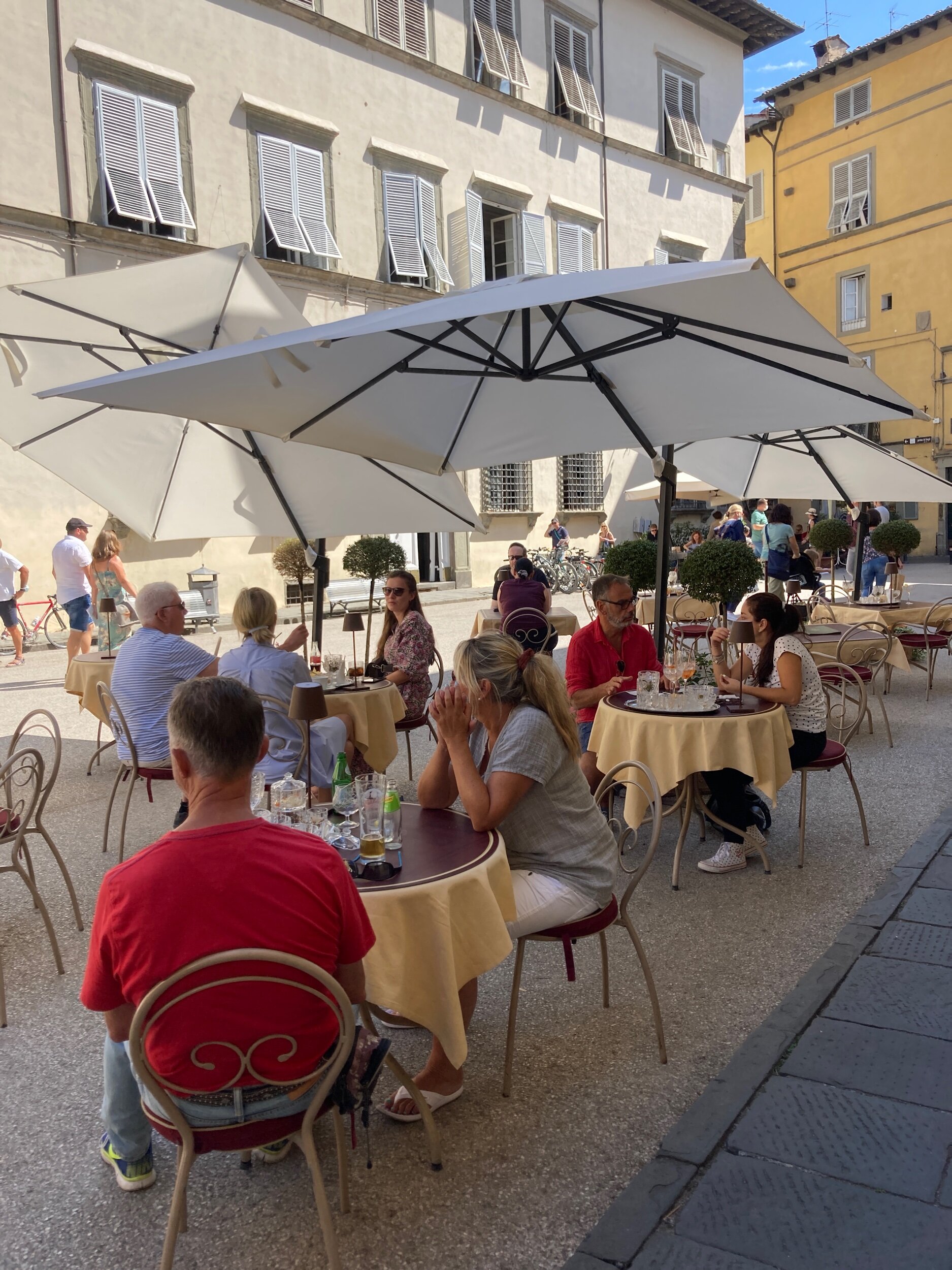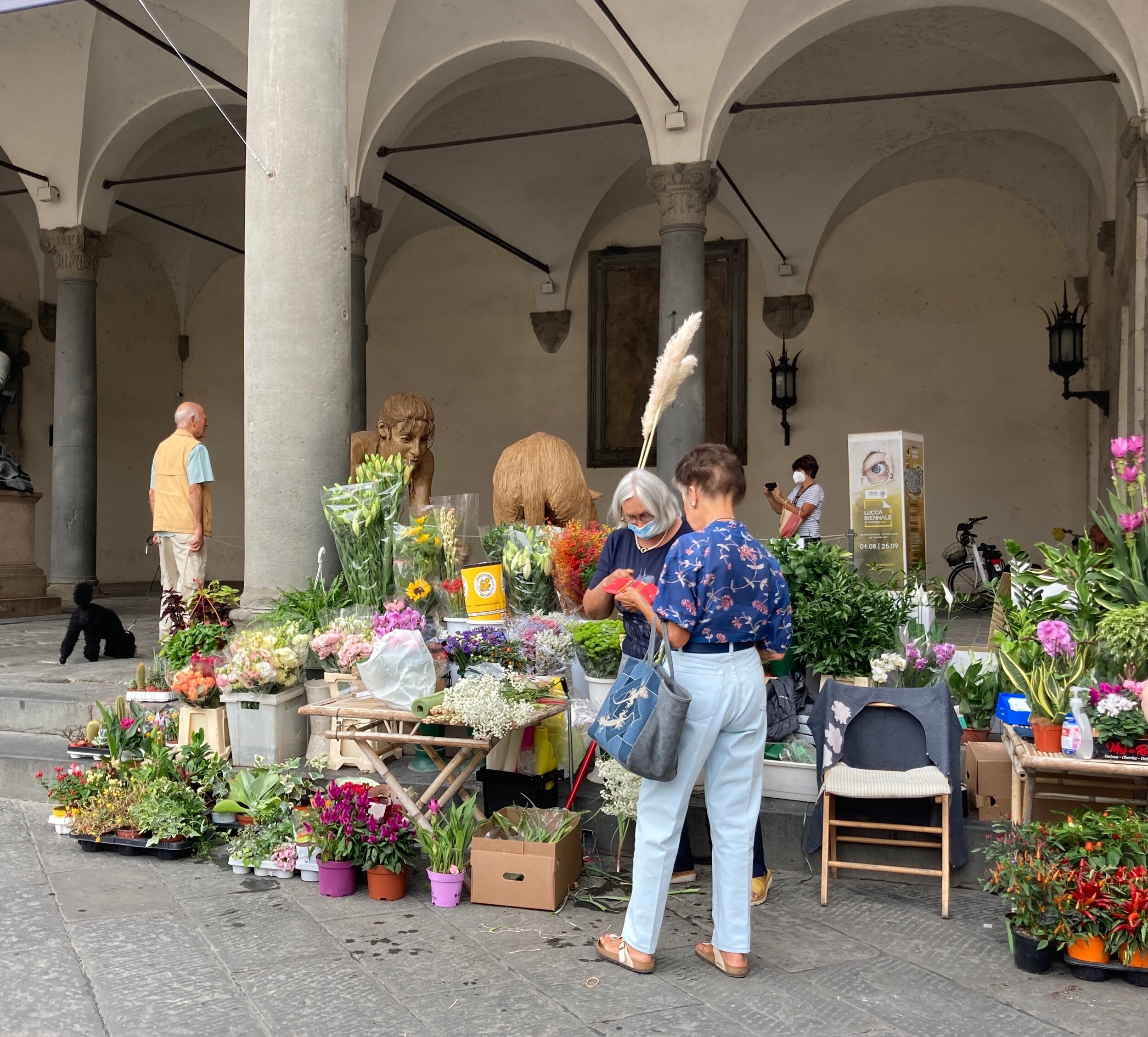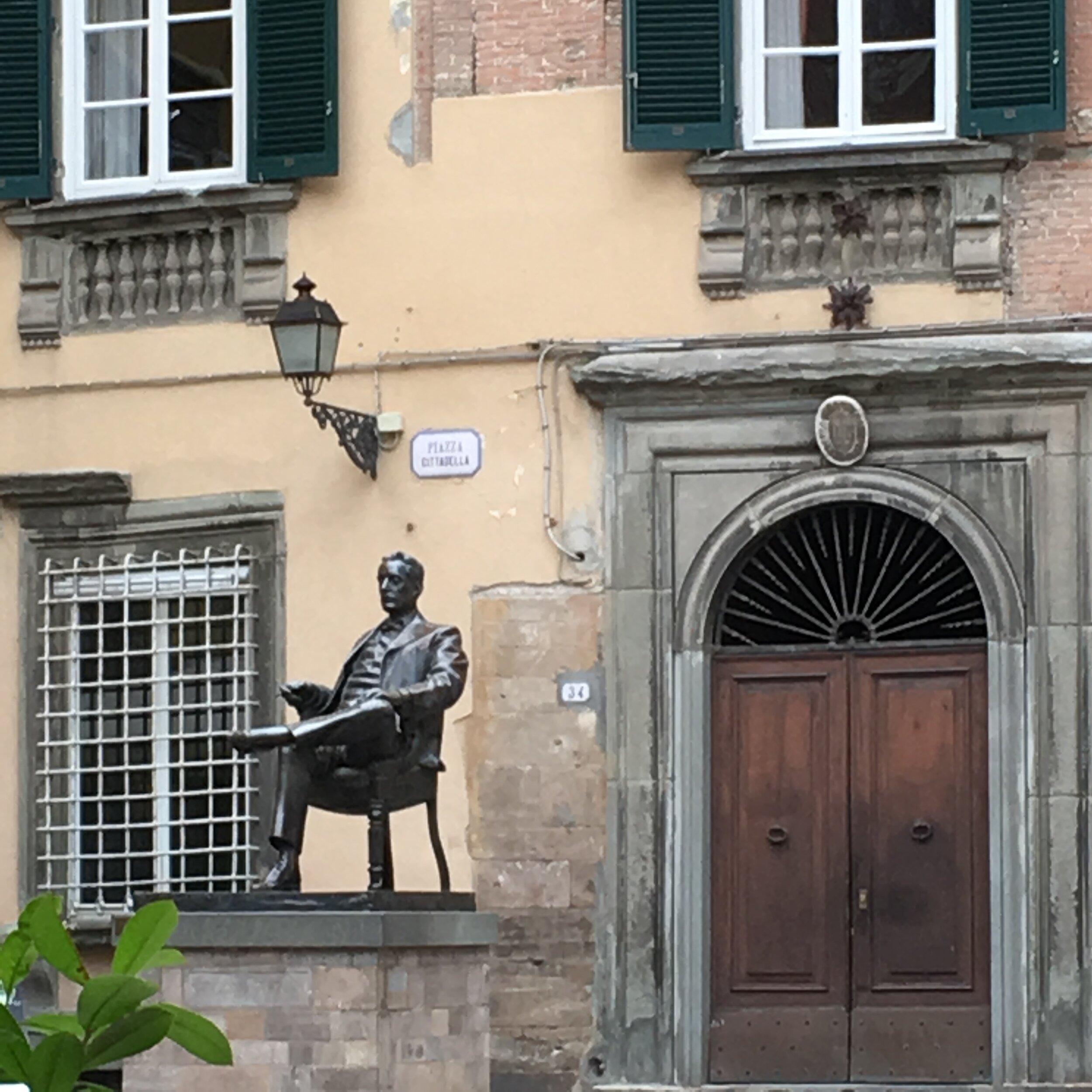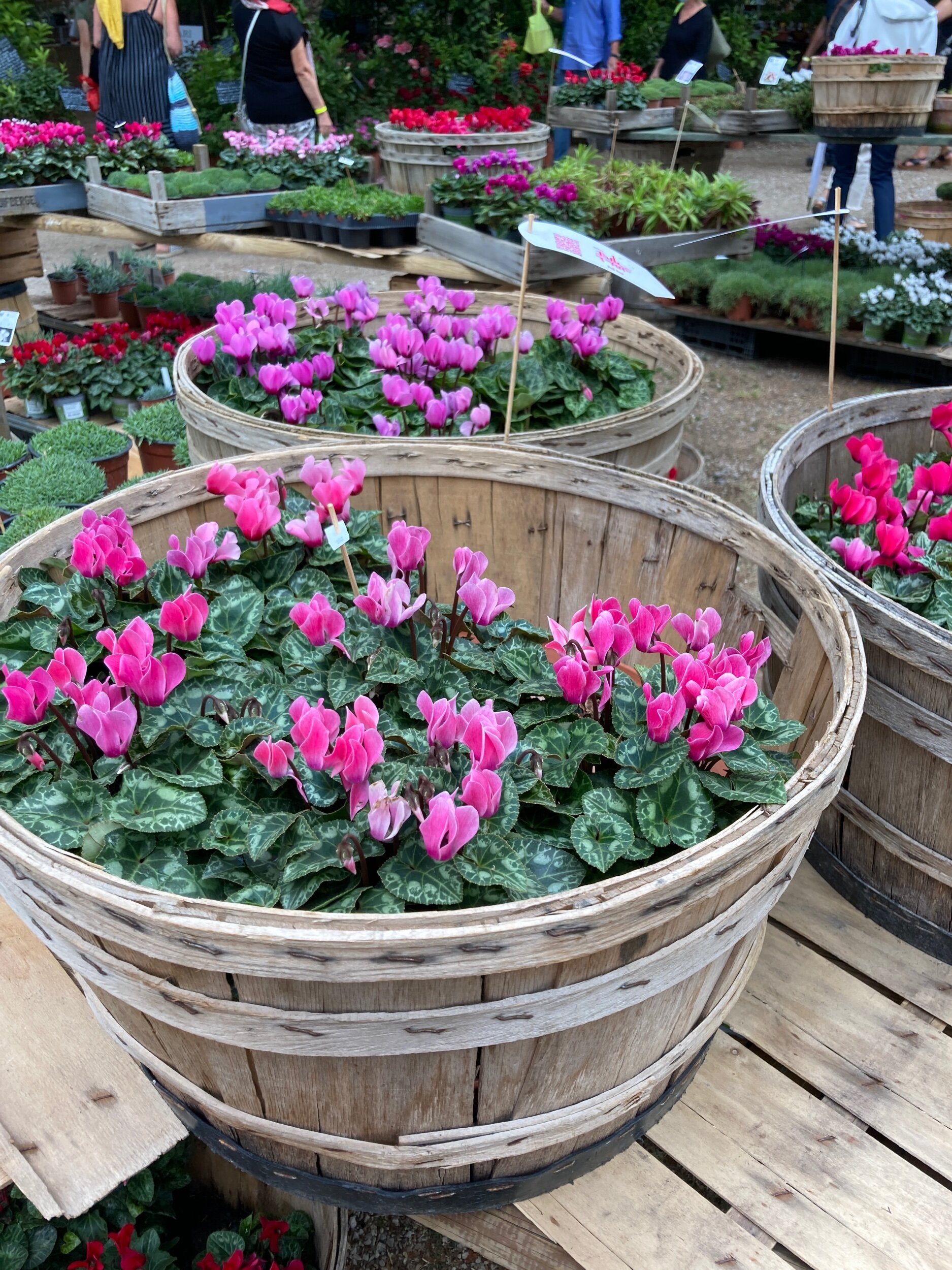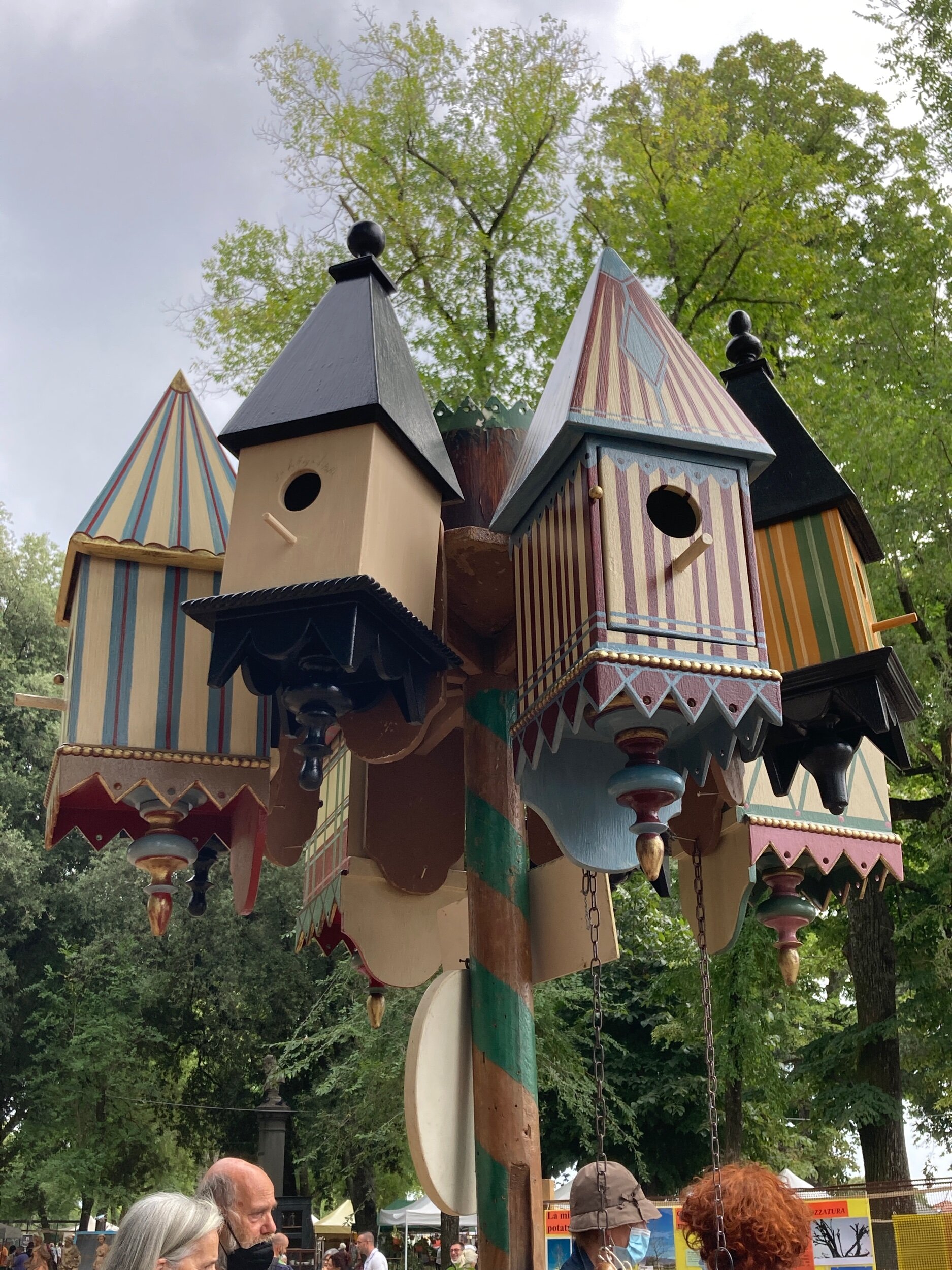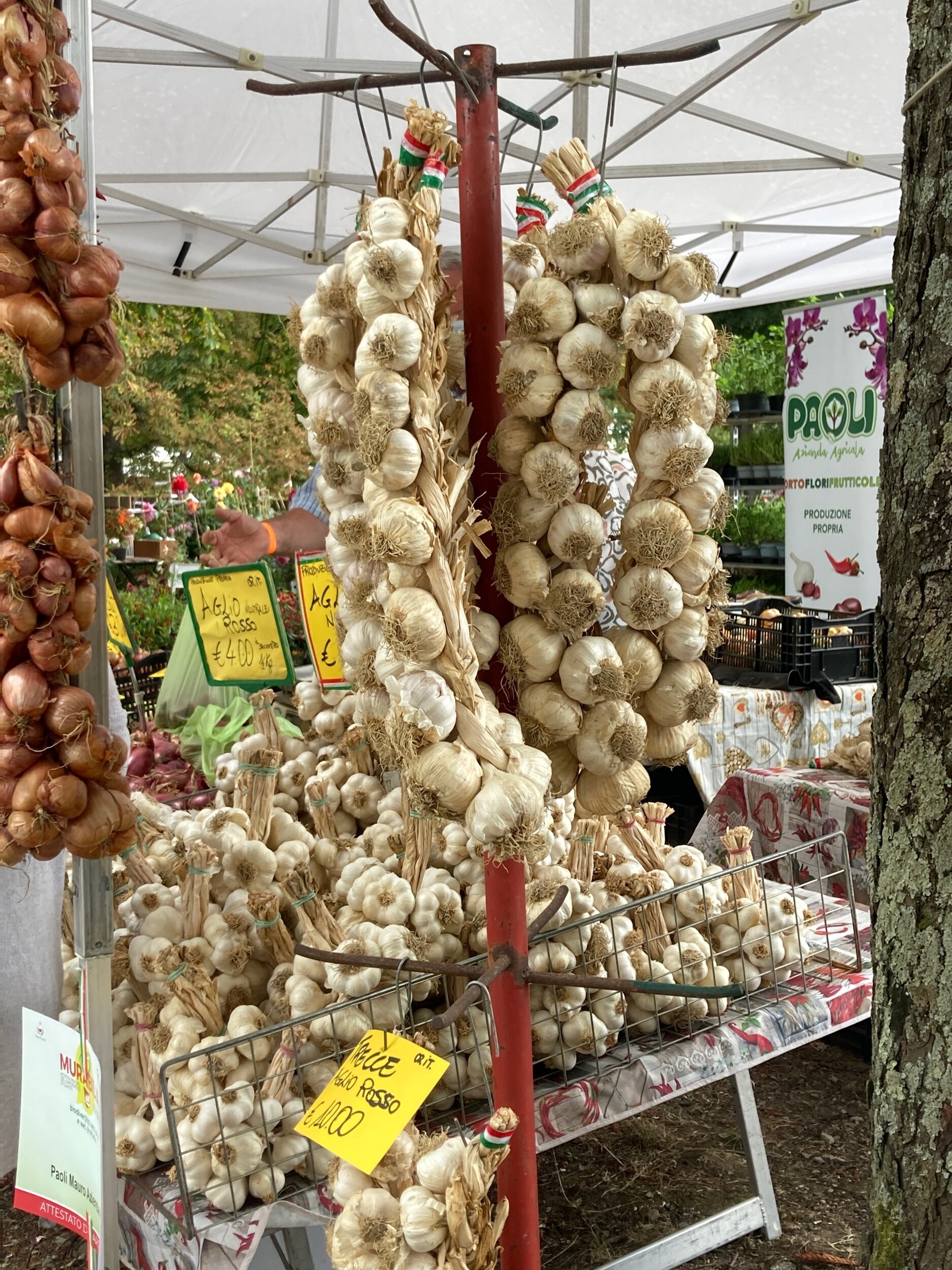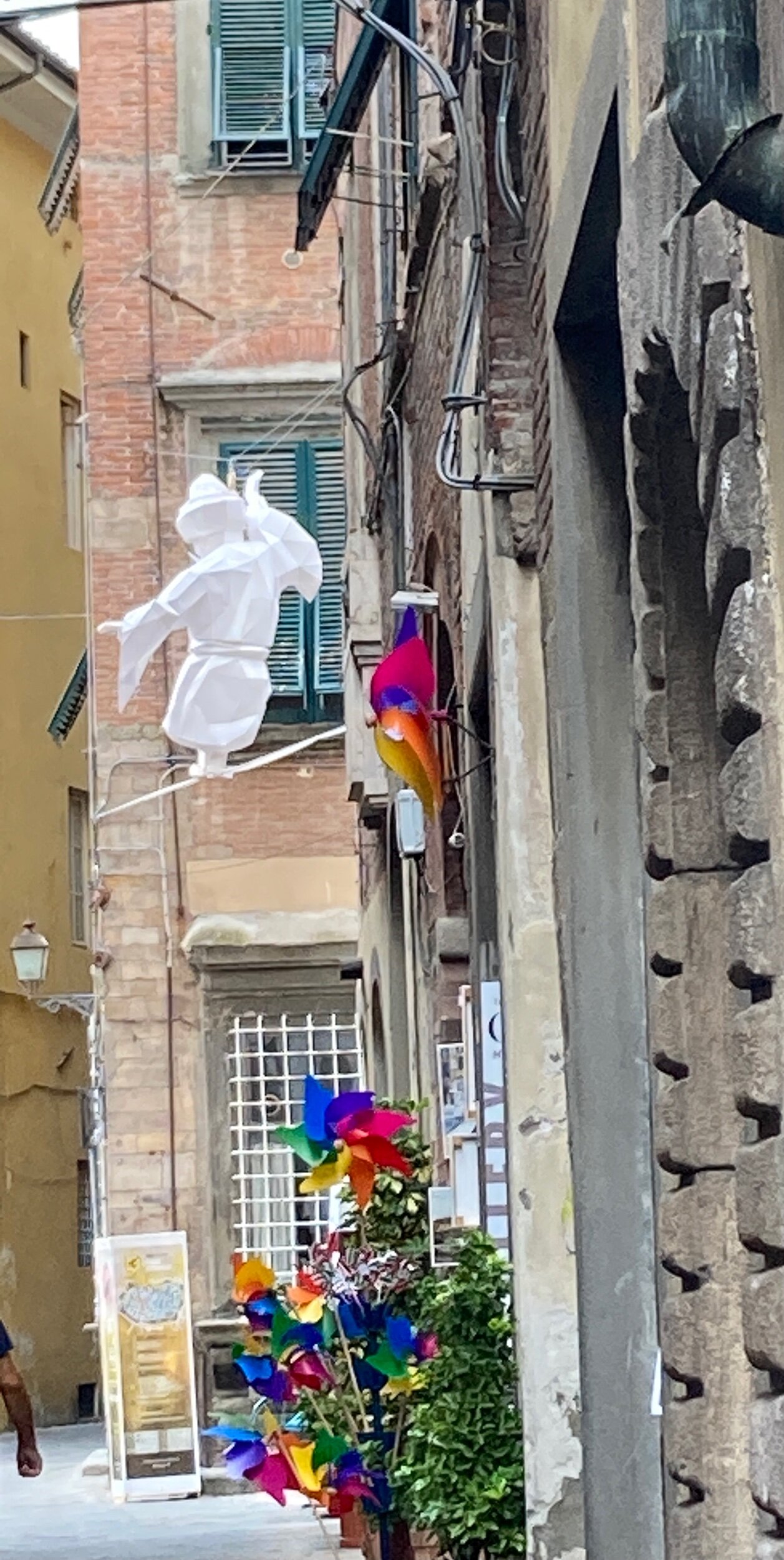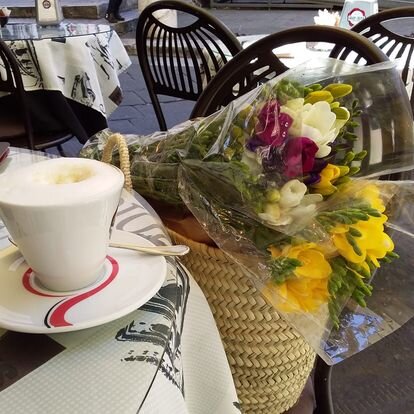Hello Lucca
After several months away, it is a joy to be back in Lucca. I feel a bit like the little bunny in the children’s book Goodnight Moon - only instead of saying goodnight to every little thing, I wander around Lucca saying hello as I greet my favorite sights, sounds, and people.
Piazza San Frediano
Hello pretty square where I can sip a morning cappuccino or an evening cocktail. Hello Torre Guinigi with your tall trees on top. Hello church bells. Hello Saturday flower market in Piazza San Michele.
Hello to the music school with the sounds of practicing students spilling from the windows. Hello stunning architecture. Hello blue Tuscan skies. Hello to Le Mura, the tree-lined wall surrounding the historic center. Hello flower filled balconies. Hello to “La Pupporona”, the graceful nymph who sits atop my very favorite Lucchese fountain.
Hello to the musical Italian language. Hello Maestro Puccini. Hello aperol spritzes on warm summer evenings. Hello gelato! How I’ve missed you all.
Piazza Cittadella - always a favorite spot. That’s Puccini keeping watch over the piazza.
It’s wonderful to say hello to friends I’ve missed while I was away. We have so much catching up to do. And to all my favorite shopkeepers, teachers, and restaurant staff - hello and please excuse my rusty Italian
Some things have surprised me as I’ve slipped back into life in Lucca. I had almost forgotten how lively it is here in a “normal” summer. And while we are not really back to normal yet (masks are still required indoors, the green pass is the new essential, and COVID still poses a threat) there is a definite upbeat change in atmosphere. The streets are busy, tourists have returned, and social groups are meeting once again (outdoors mostly).
While most of the visitors right now are from EU countries, the Americans and Canadians are arriving too, despite frequently changing requirements. One example of those changes - when I arrived on August 28th I needed only to show proof of vaccination status and complete the EU PLF (the on-line passenger tracking form). As of September 1 however, visitors from the US and Canada also need a negative covid test 72 hours before arrival. No quarantine required if fully vaccinated and COVID negative but be prepared to show proof of vaccination and a photo ID to enter most venues.
The return of art exhibits is definitely something to savor. This one is a personal favorite of mine.
Another pleasant find is that while summer 2020 saw the cancellation of almost all events, this summer there are posters up throughout the city advertising concerts, garden shows, art exhibits, and other upcoming events. This past weekend the fall garden show (Murabilia), cancelled last September, took place along the city walls.
Perhaps best of all, the Cartasia (Biennale poster above) art show has returned (after a year’s delay) with installations all through town. I’m looking forward to exploring this always fascinating display of paper art.
One of the many paper art installations around Lucca, part of the Lucca Biennale Cartasia show.
I’m looking forward to visits from several American friends in the next few weeks and to doing some fall travel within Italy. And even though I already miss my family and friends in the US, it is good to be back. Hello Lucca!

